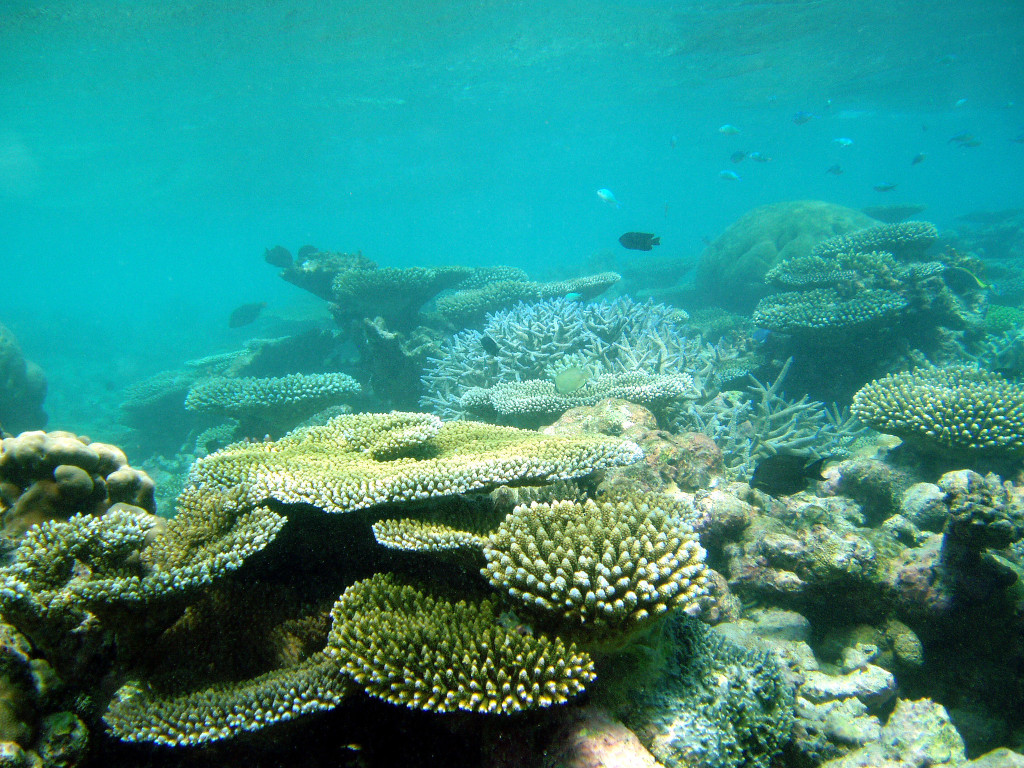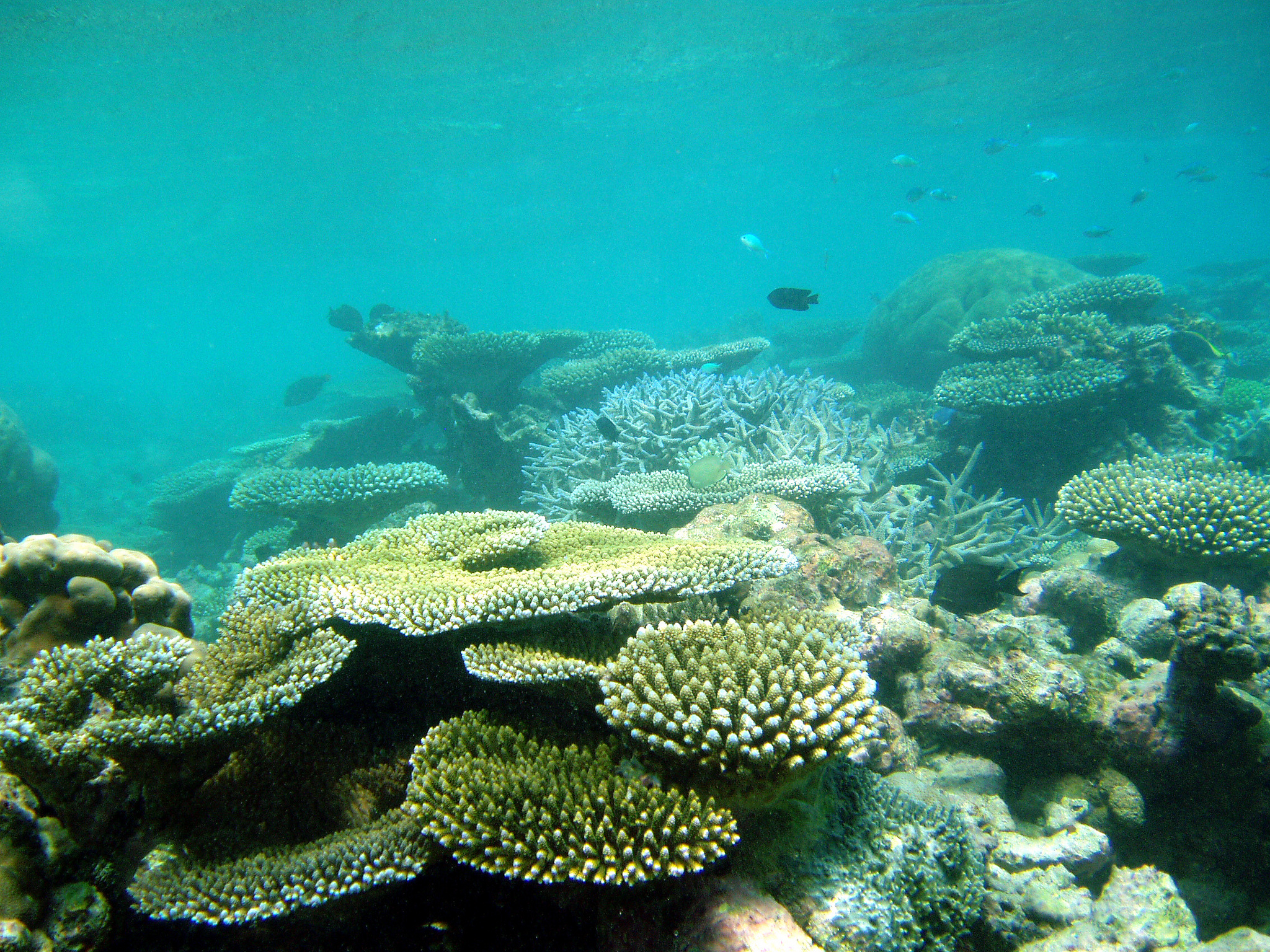
Coral reefs are some of the most spectacular sights in the world. People call them the “rainforests of the sea.” These colorful otherworldly places are some of the most diverse ecosystems on Earth. Coral reefs provide a home for 25% of all marine species and they flourish even though ocean waters that provide few nutrients typically surround them.
One of the most dangerous consequences of the buildup of carbon dioxide in the atmosphere is ocean acidification. The oceans absorb about a quarter of all the CO2 released into the atmosphere and the result is changing ocean chemistry. The pH of the ocean has lowered by 0.1 and while this doesn’t sound like much, it represents a 30% increase in acidity.
This acidity makes it more difficult for corals to grow their skeletons and it makes it easier for bioeroding organisms to tear them down. Corals make their skeletons out of calcium and carbonate ions from seawater. Ocean acidification removes carbonate ions from the water.
A healthy coral reef ecosystem is a constant balancing act between corals building their skeletons up toward the sea surface and other sea creatures – mollusks, worms and sponges – burrowing into the coral to create shelters. The process is called bioerosion and ultimately reduces coral skeletons to rubble. On healthy reefs, calcium carbonate production barely exceeds the losses by erosion, dissolution and offshore transport. Reefs grow very slowly when sea levels are stable.
Rising seas, acidification and human-introduced nutrients for bioeroders all threaten the survival of coral reefs. The rainforests of the sea are in danger.
**********
.
Web Links
Coral Reefs Threatened by a Deadly Combination of Changing Ocean Conditions
Photo, posted March 17, 2012, courtesy of Corey Harmon via Flickr.
.
Earth Wise is a production of WAMC Northeast Public Radio.
